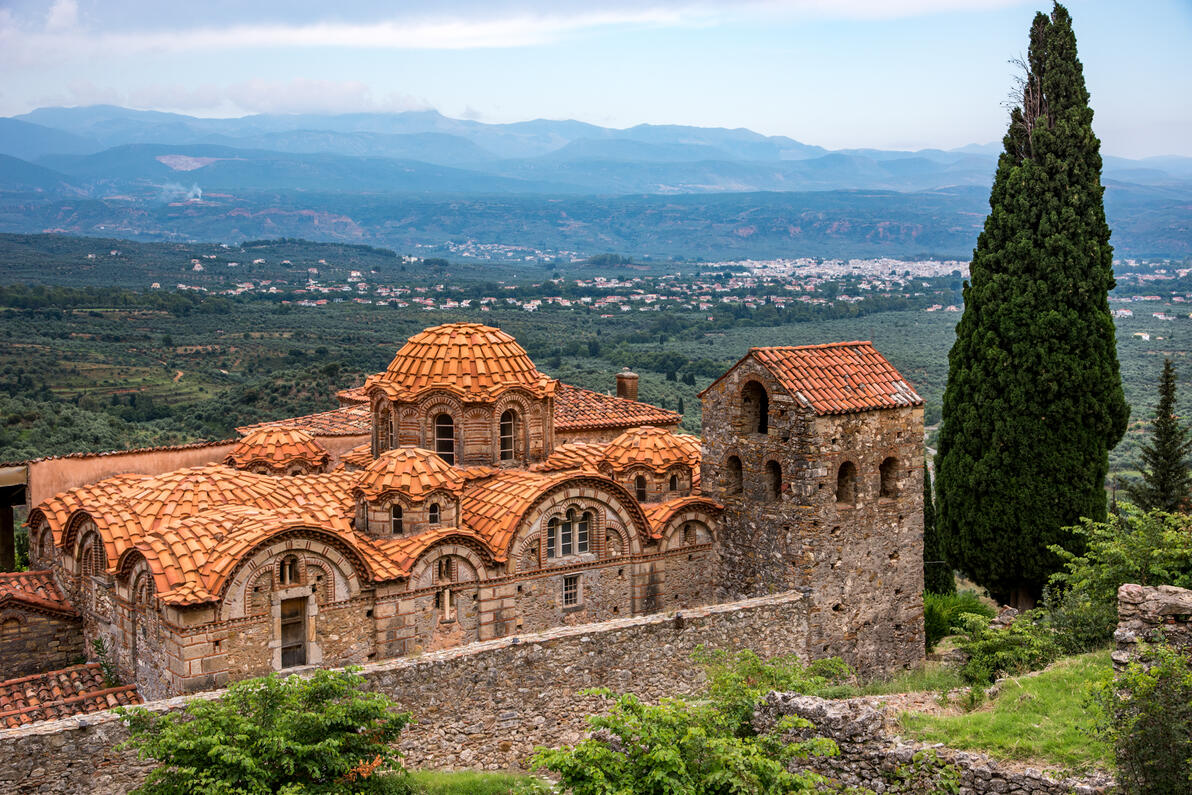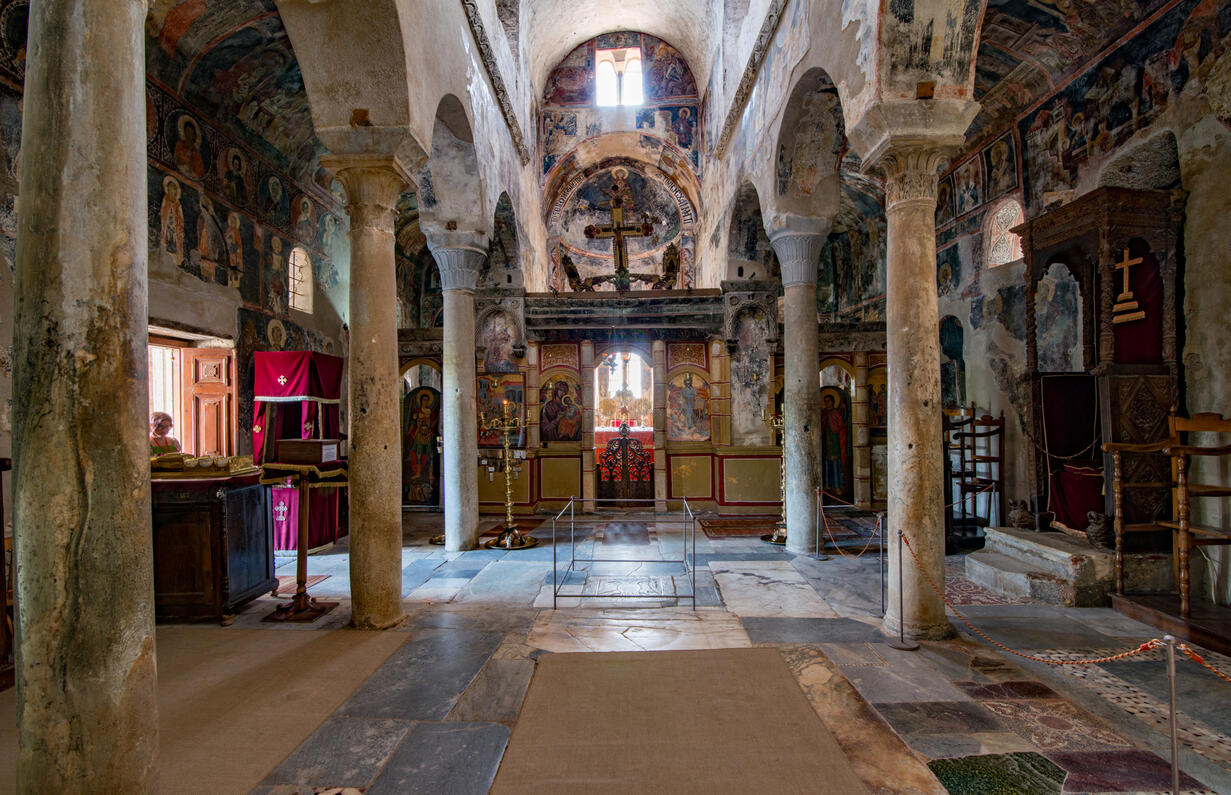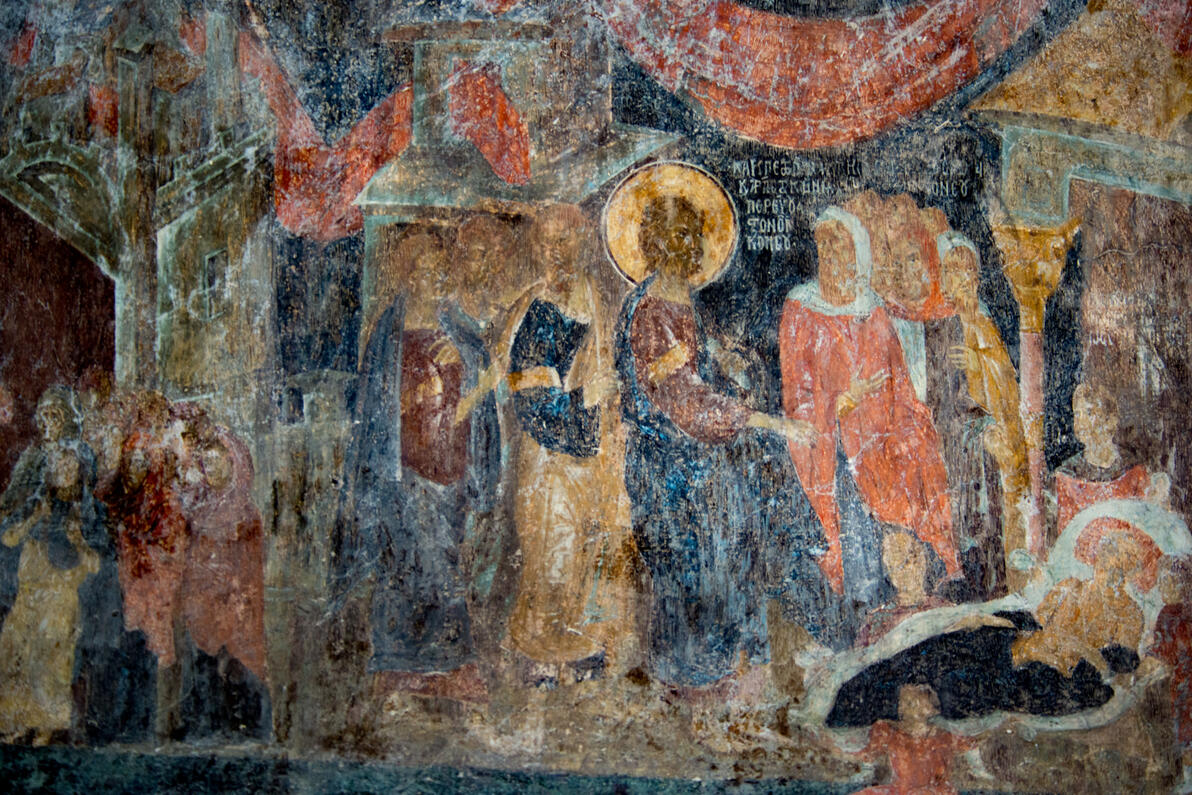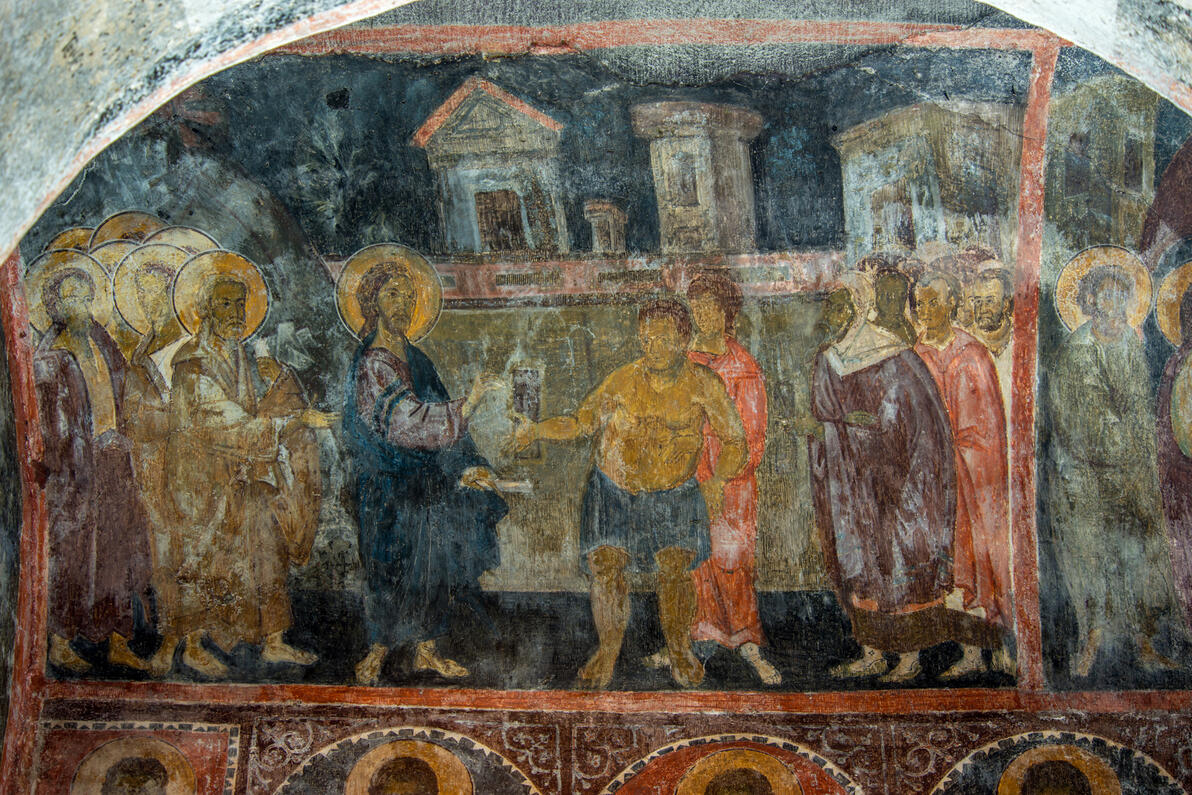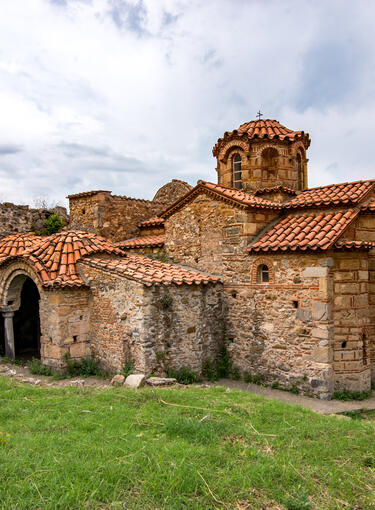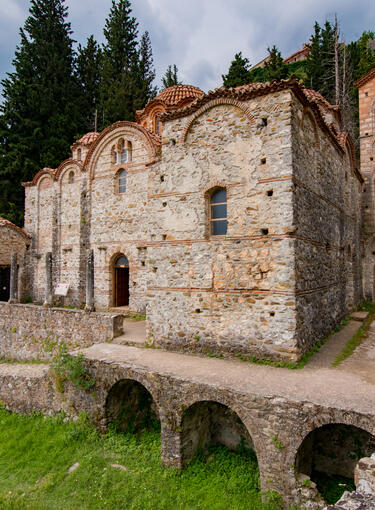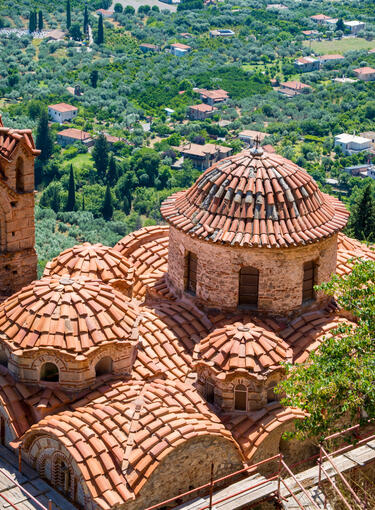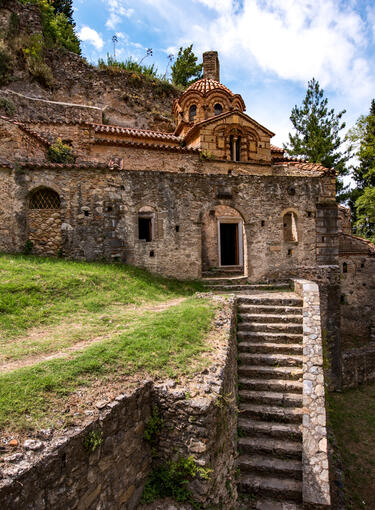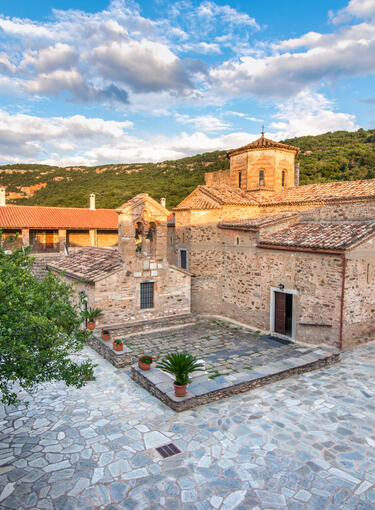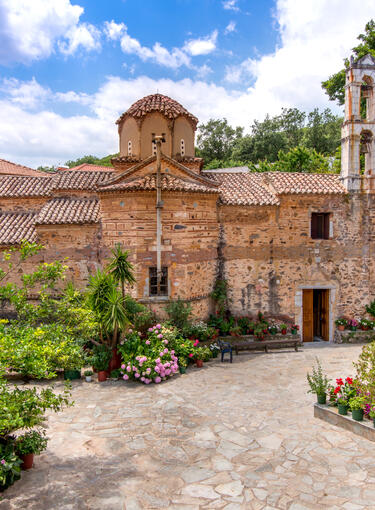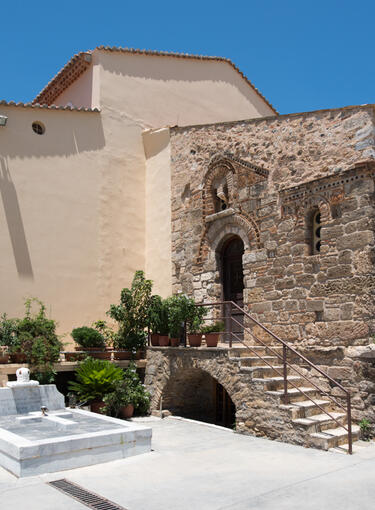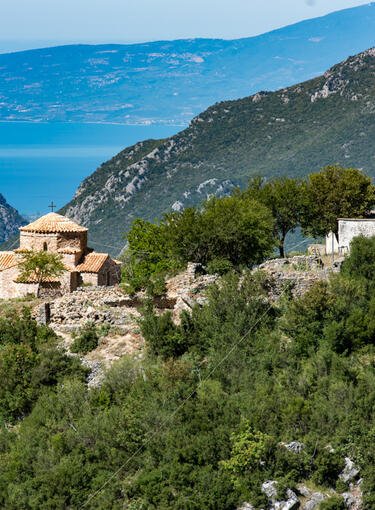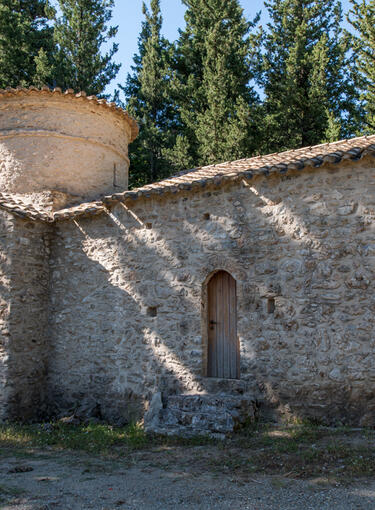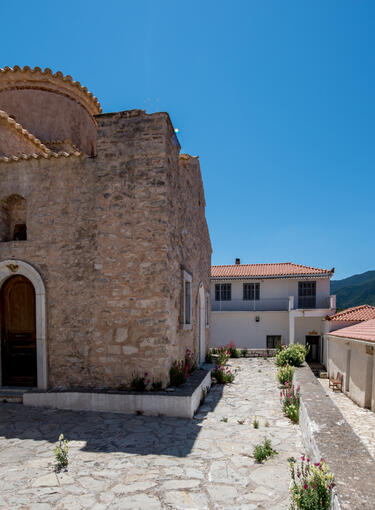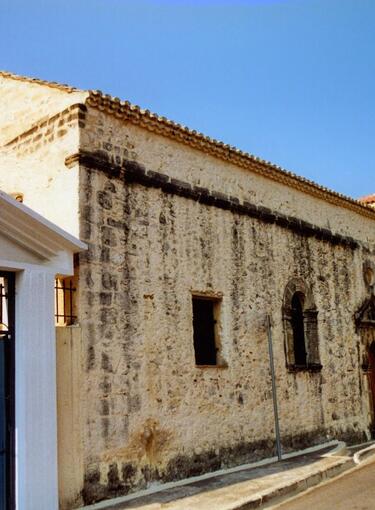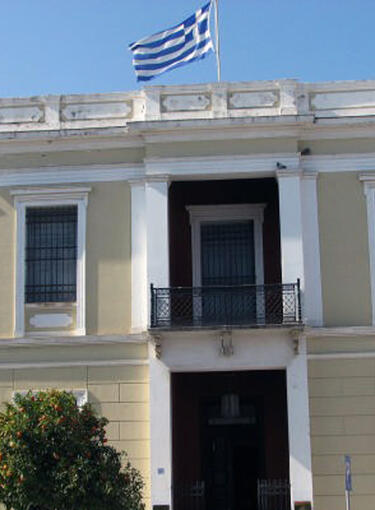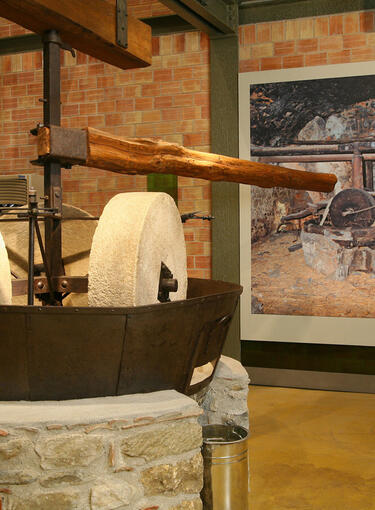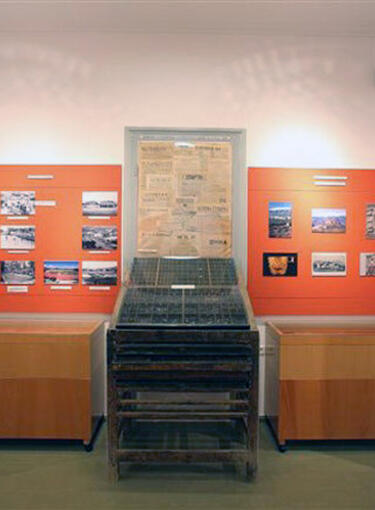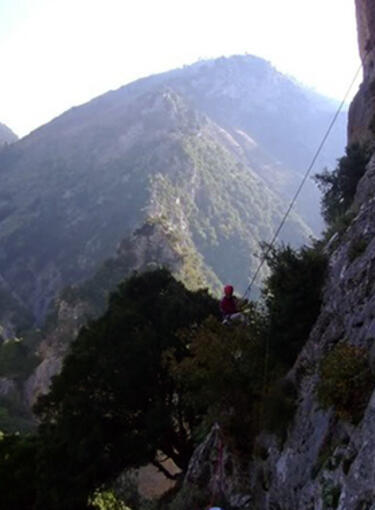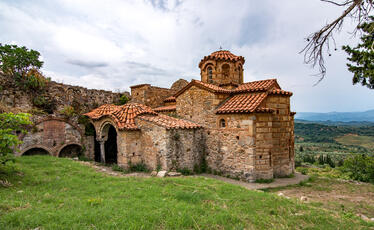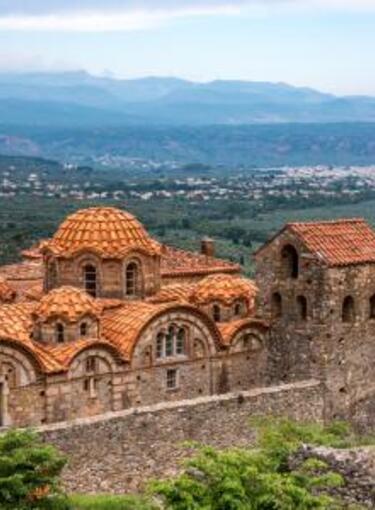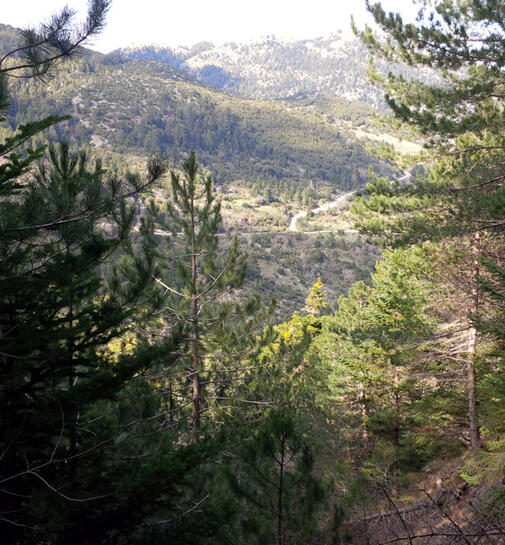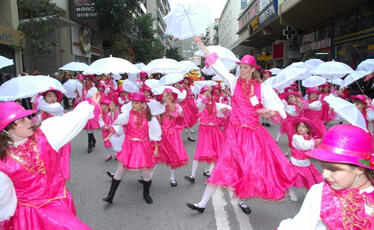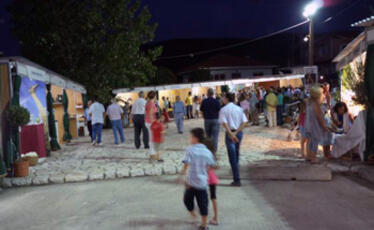Historic Temples
Near the entrance of the Kato Poli in Mystras, next to the fortification wall, is the Metropolis, dedicated to Agios Dimitrios. It is the oldest church of the hill, which was the religious centre of the city and the seat of the Metropolitan of Lacedaemonia.
Its foundation dates immediately after 1262, when Mystras passed from the Franks to the Byzantines and people started settling on the hill. Then, they transferred here the seat of the metropolis of Lacedaemonia from Sparta, and the metropolitan Eugenios became the first founder of the church, which in its initial form was a three-aisled basilica with a narthex on the west. During the years 1291-1292, perhaps even a little bit earlier, there were extended construction works at the church and they added the bell tower over the chapel on the southwestern corner. As an inscription on southern side of the narthex informs us, the one responsible for these modifications was the second founder of the church, Nikephoros Moschopoulos, with his brother Aaron as his helper.
The church took its final form in the 15th century, by the metropolitan Mathew, the third founder, for whom our knowledge is limited. Then the galleries were added, and the floor was turned into a cross-in-square church with five domes. Having as a model the churches of Odegetria and Pantanassa, the monument was shaped according to the so-called “mixed” or “type of Mystras”, which in the ground floor is a three-aisled basilica and on the floor there is a cross-in-square church. This radical re-construction is due to the fact that the despot and the lords watched the mass from the galleries, as dictated by the imperial rite of Constantinople, which prevailed in Mystras as well, since 1349, when the despotate was founded.
The construction of the church was rather carefully done, as it is evident by the masonry of the eastern side, which belongs to the initial three-aisled basilica, and is built according to the cloisonné system of masonry. At the church’s interior, there is a remarkable sculpted decoration, which came from older monuments. From it what stands out is the two shrines at the pillars of the altar area, the screen, and mainly the slab with the relief two-headed eagle of the Palaeologans on the floor, under the dome, since according to tradition, this was the spot where they crowned the last Byzantine emperor, Constantine XI Palaiologos, in 1449. The Metropolis also stands out because of the numerous inscriptions and the variety that characterizes its wall painting decoration. The wall paintings belong to three difference periods, which correspond to its three construction stages and follow the different style of each period.
At the church’s complex there is a museum, which hosts sculptures, wall paintings, icons and excavation findings.
Informations
Additional
Date:
around 1270
Season:
Byzantine
Holy Metropolis:
Monemvasia and Sparta
Under the Supervision of:
Ephorate of Antiquities of Laconia
Address:
Kato Poli


